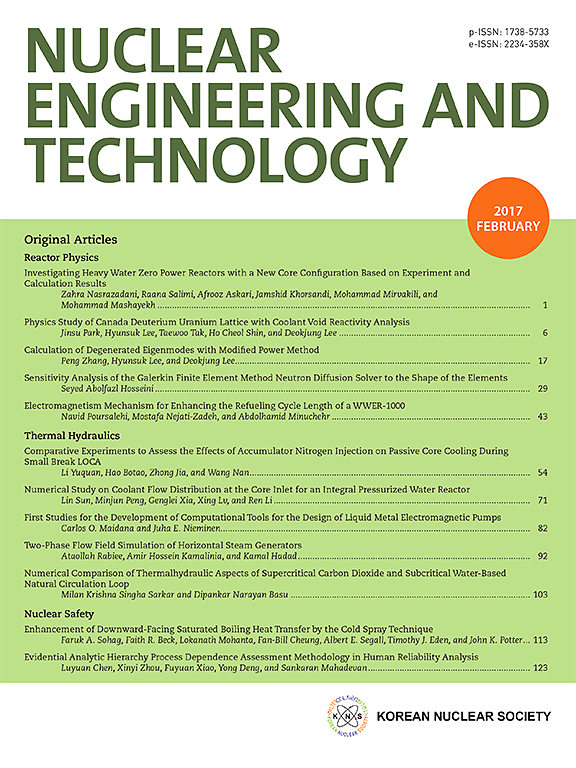Dosimetric and energy deposition evaluation of the dual-microcavity capsule structure for glioma 125I brachytherapy using Monte Carlo simulation
IF 2.6
3区 工程技术
Q1 NUCLEAR SCIENCE & TECHNOLOGY
引用次数: 0
Abstract
Brachytherapy has emerged as a primary approach for tumor treatment, and determining the dosimetric parameters of the radiation source is a critical step in radiation therapy, as recommended by the American Association of Physicists in Medicine (AAPM). This study investigates a novel dual-cavity capsule for combined radiotherapy and chemotherapy treatment. Monte Carlo simulations were used to obtain the dosimetric parameters and energy deposition distribution of the dual-cavity structure within a water phantom. The simulation results were then compared with published data for other commercial 125I seeds. The results show that the dose-rate constant for the dual-cavity capsule is (0.984 ± 0.020) cGy·h−1U−1, which aligns with values reported for other commercial 125I seeds. The radial dose function and anisotropy function of the dual-cavity capsule generally match reference data for these seeds, though notable differences were observed at specific positions. When the source activity was set to 1 mCi, the dose rate at the center of the dual-cavity capsule was 12.40 cGy/h, compared to 13.07 cGy/h for a single-cavity structure containing only a radiotherapy channel, showing a dose rate difference of approximately 5 %. The presence of the chemotherapy channel caused a shift in the peak dose rate within the dual-cavity structure but had minimal effect on the overall radiotherapy dose distribution. The dual-cavity capsule demonstrates a high central dose rate, with a rapid dose fall-off toward the periphery. Due to structural and material modifications, the radial dose function and anisotropy function of the dual-cavity capsule deviate from the assumptions of the AAPM TG-43U1 formalism, indicating that the TG-43U1 two-dimensional dose-rate equations may not fully apply to this novel design. This study serves as a valuable reference for establishing spatial dosimetric parameters for the dual-cavity capsule structure in clinical practice.
求助全文
约1分钟内获得全文
求助全文
来源期刊

Nuclear Engineering and Technology
工程技术-核科学技术
CiteScore
4.80
自引率
7.40%
发文量
431
审稿时长
3.5 months
期刊介绍:
Nuclear Engineering and Technology (NET), an international journal of the Korean Nuclear Society (KNS), publishes peer-reviewed papers on original research, ideas and developments in all areas of the field of nuclear science and technology. NET bimonthly publishes original articles, reviews, and technical notes. The journal is listed in the Science Citation Index Expanded (SCIE) of Thomson Reuters.
NET covers all fields for peaceful utilization of nuclear energy and radiation as follows:
1) Reactor Physics
2) Thermal Hydraulics
3) Nuclear Safety
4) Nuclear I&C
5) Nuclear Physics, Fusion, and Laser Technology
6) Nuclear Fuel Cycle and Radioactive Waste Management
7) Nuclear Fuel and Reactor Materials
8) Radiation Application
9) Radiation Protection
10) Nuclear Structural Analysis and Plant Management & Maintenance
11) Nuclear Policy, Economics, and Human Resource Development
 求助内容:
求助内容: 应助结果提醒方式:
应助结果提醒方式:


